Exploring Extremadura
All other political beliefs aside, I have one big reason to be strongly opposed to Spain’s new president, Mariano Rajoy: he’s declared a war on puentes. As I’ve mentioned before, puentes, literally translated to “bridges,” are long holiday weekends. People will use “puente” to refer to any holiday weekend, but I believe puente in its truest definition refers to when a holiday falls on a Tuesday or Thursday and schools and businesses get the Monday or Friday off as well, making it a fabulous 4-day weekend. In the U.S., we typically shift any holiday to a Monday to make it a nice, clean 3-day weekend, rather than giving any extra time off, and Rajoy wants to do the same. It’s logical, I know, and it’s good for business, but for those of us who want to take advantage of long weekends to travel? Not so good. Rajoy, quit being such a bummer.
Anyway, I began this rant because in February, we had a 4-day puente (meaning 5 days for people like me who don’t work Fridays) for Día de Andalucía, which we used to explore an oft-forgotten region of Spain, Extremadura. With a population only just above one million in the entire comunidad autónoma (state, basically) and far less international acclaim than Spain’s more popular destinations like Barcelona, Madrid, or Andalucía, Extremadura, the region north-west of Andalucía, is a bit of a hidden gem, and a gem it is indeed.
Our Spanish friend Javi kindly offered to drive, so off we went on our Extremadura road trip! Our first stop was Cáceres, a beautiful city that dates back to prehistoric times. By night, we explored the old part of the city, distinctly medieval. I was instantly charmed by it and felt like I had been transported directly back into medieval times. The first night in Cáceres brought that feeling of giddiness and awe, almost like love, that I’ve experienced on my favorite trips.
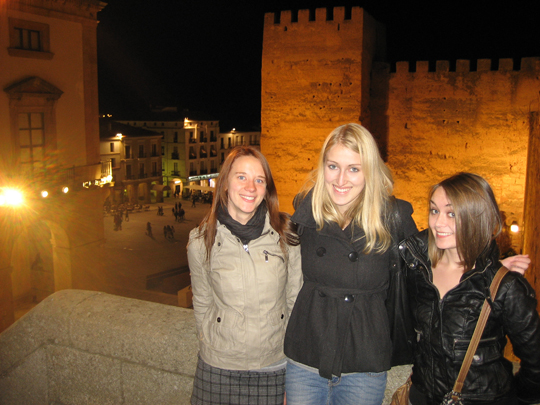
Sara, me, and Linnaea overlooking Cáceres' Plaza Mayor
The following morning, we departed for another part of Extremadura: the tiny town of Guadalupe., which my friend Javi had heard was a must-see destination. We soon realized it was must-see mostly for hardcore Catholics, but it was still quite an adorable town. It’s known for its monastery, built in the 1300s after the Virgin Mary appeared to a shepherd telling him to dig, and there they discovered the Vírgen de Guadalupe statue that the monastery is built around. To be honest, as a non-Spaniard and non-Catholic, I can’t really wrap my mind around the Spanish fascination with virgins (e.g. the giant rivalry in Sevilla between the Vírgenes of Triana and Macarena), but, you know, to each his own.
We began with a tour of the monastery, as it’s the town’s main attraction. Impressive, definitely, although after seeing a million of Europe’s religious constructions, you’ve kind of seen them all. I somehow refrained from kissing the virgin that people come from all over on pilgramages to kiss. We had a delicious lunch in the town center, trying some local tapas, and then wandered around the small, hilly streets, following a suggested tourist route. Though Guadalupe was nothing remarkable, it was certainly beautiful, and I always love aimlessly wandering around small towns.
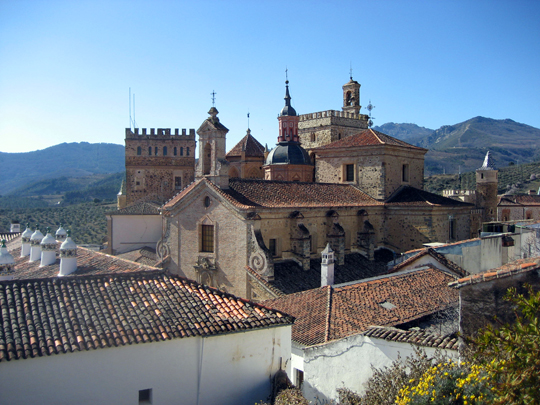
Overlooking Guadalupe
Next stop: another small town in Extremadura, Trujillo. Upon arriving, we realized there was a bike race going throughout the entire town. which inconveniently meant the main attraction we wanted to see in Trujillo, the castle, was closed. However, we were still able to walk around it, once again being transported back to medieval times, getting some great views over the Extremaduran countryside, and watching a beautiful sunset from the castle walls. One of Trujillo’s main claims to fame is that Francisco Pizarro, who conquered Peru, was born there. We passed by his house, which was kind of neat since I was in Peru last summer.
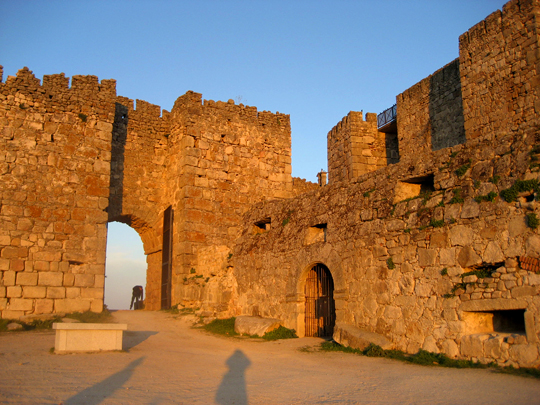
Trujillo's Castle
We returned to stay the night outside of Cáceres in “bungalows” in the countryside. Long story short, there was a mix-up with our reservation, and we ended up upgrading to a giant cabin that could have fit about ten people. We were pretty psyched about our lodging and spent the evening there.
The next morning, we returned to the center of Cáceres to see it by day. It’s a small town, so we saw it quickly, went in a few museums, and enjoyed an ice cream in the Plaza Mayor before continuing on to Mérida. Mérida is the capital of Extremadura and known for its well-preserved Roman ruins. We arrived by night, walked along the beautiful river, visited the giant Roman bridge, and exploring the town center a bit. One thing that particularly struck me was how fresh the air was. It’s not that Sevilla’s dirty or anything, but I was kind of obsessed with Mérida’s air quality. Is that weird? After a long and exhausting hunt for an open and decently-priced restaurant (everything was closed because it was Sunday night), we ended the evening with some great, cheap tapas.
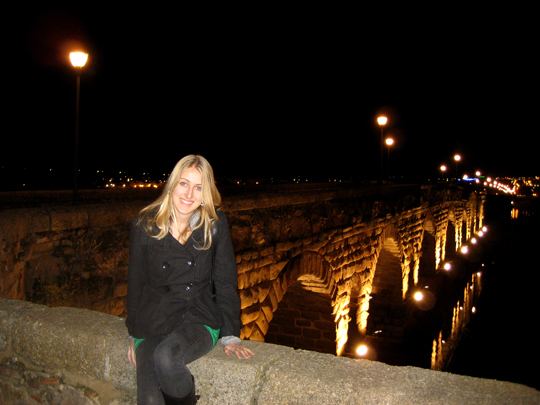
Me at the Puente Romano, which dates back to the 1st century AD
The next day involved exploring all the Roman ruins Mérida has to offer, crawling over stones and through tunnels, marveling at just how old these constructions really are. A highlight was the Roman Theatre, built in the 1st century BC, which I recognized well from photographs, although all of the sights were pretty darn impressive. Dang, Romans, you had mad skills. By the end of the day we were exhausted but content and headed back to Sevilla.
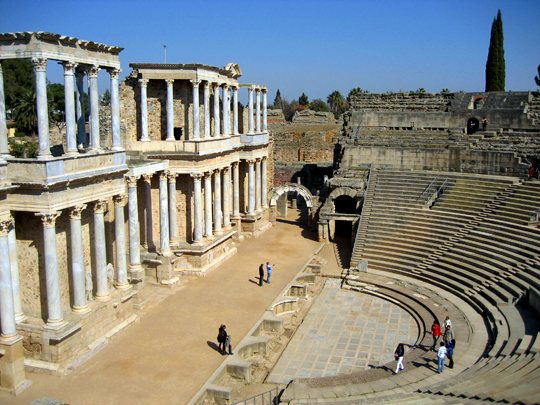
The impressive Roman Theatre
As I’ve said, Extremadura is often overlooked by tourists, but if you get a chance to go, do! See more of my photos from Extremadura on Facebook.
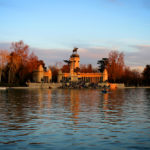
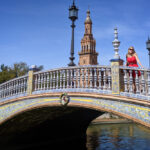

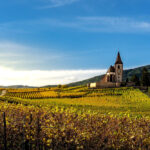
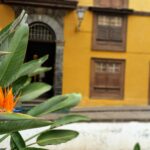


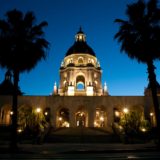


Hola! I enjoyed every minute of our most recent adventure! (except walking on cobblestones) With my balance being off, I would have to go slow! I love our adventures-extremely intresting! Seeing the sunset from the castle sounds beautiful! The pictures of you are beautiful! I can hardly wait to see you! Anything special for the 16Th? I hope you have a memorable one! I love you SO much!